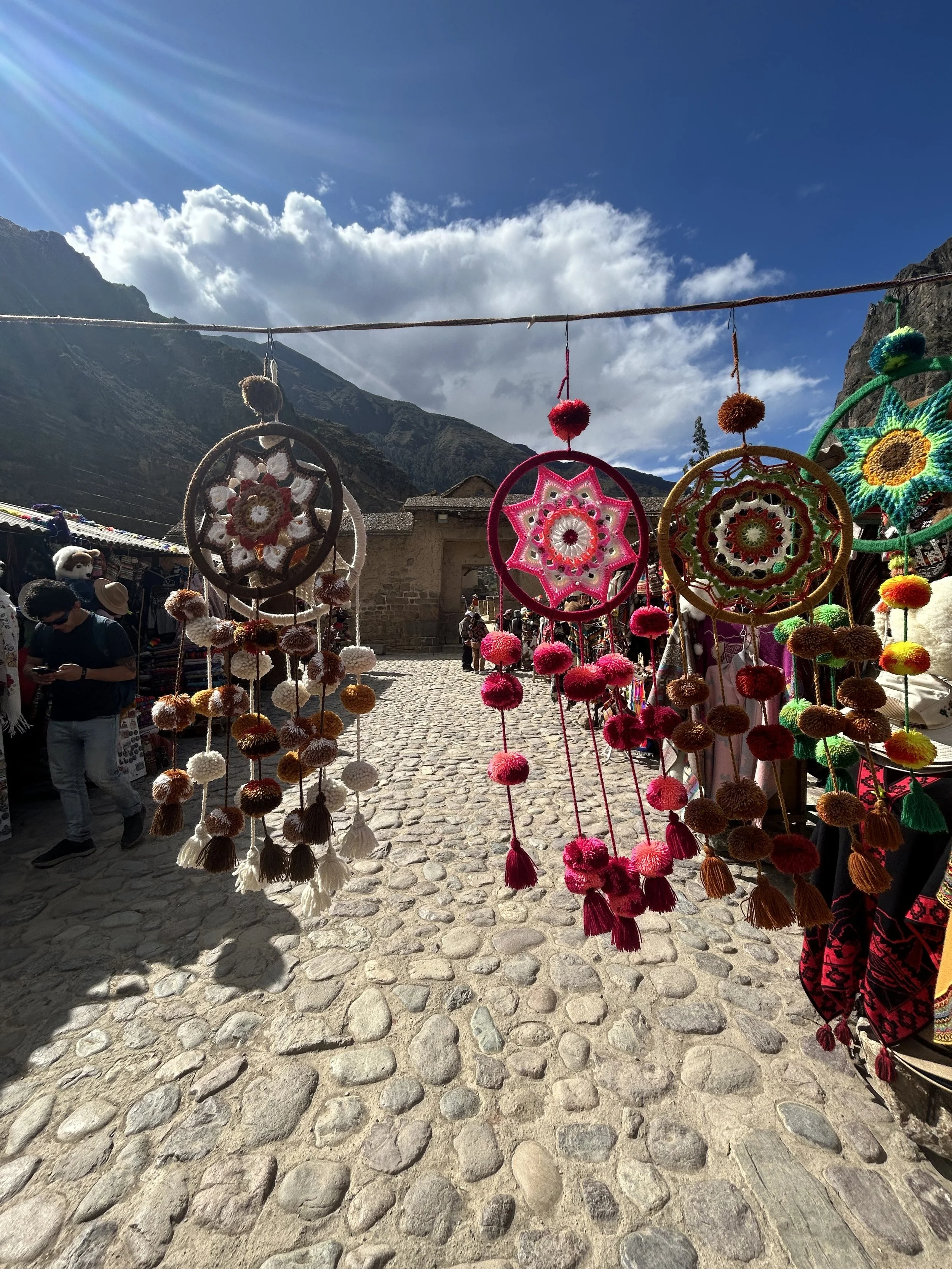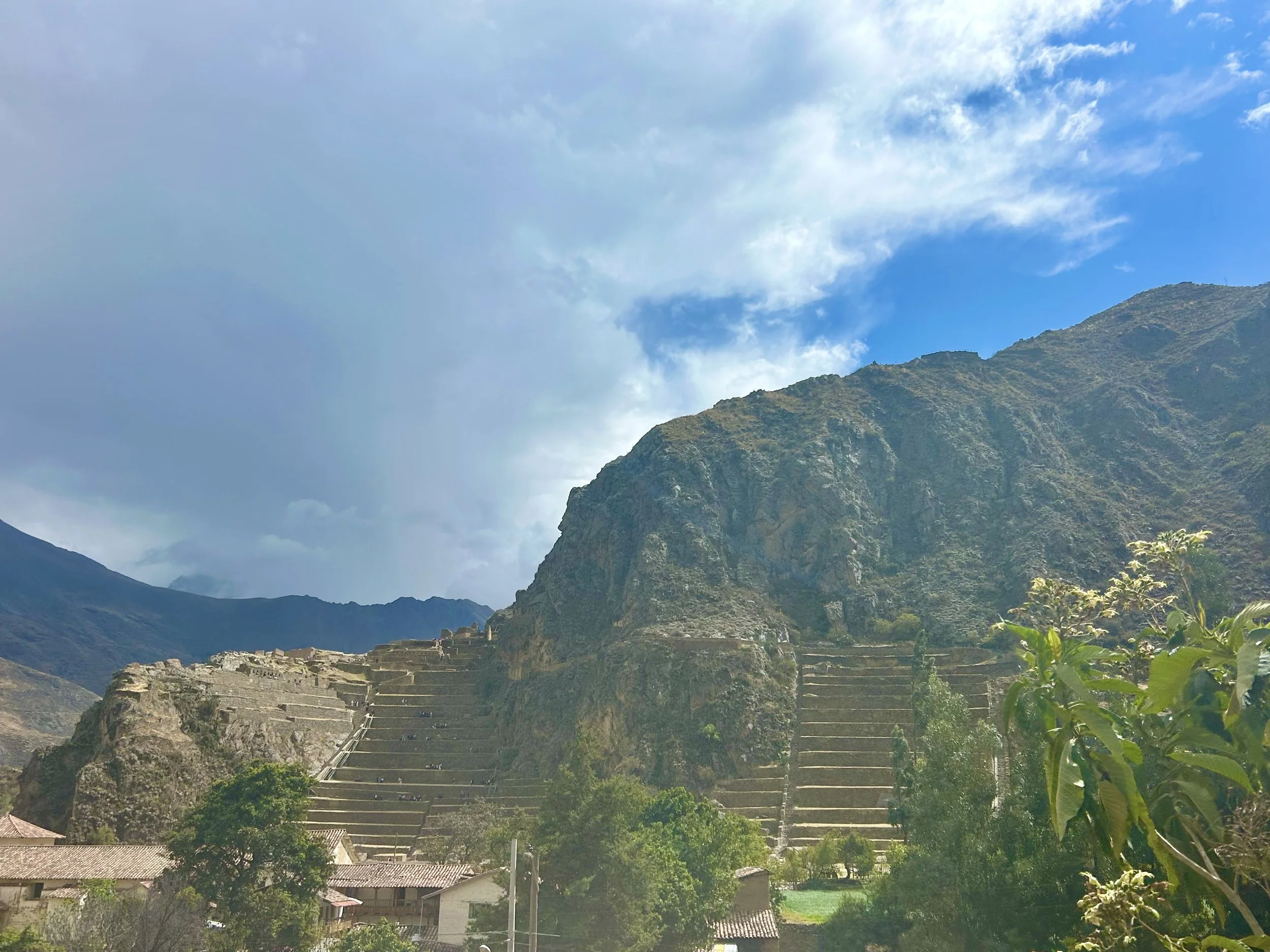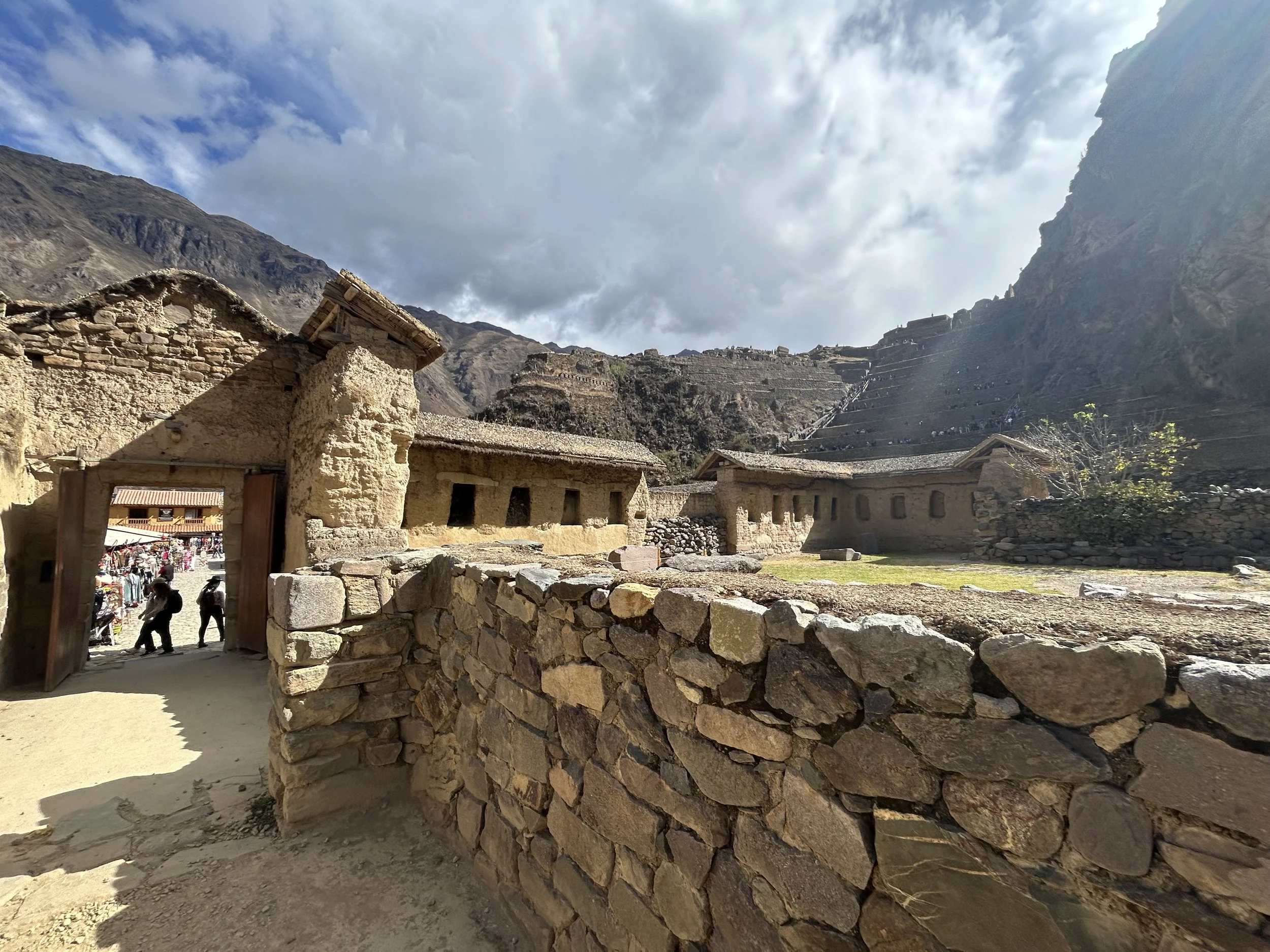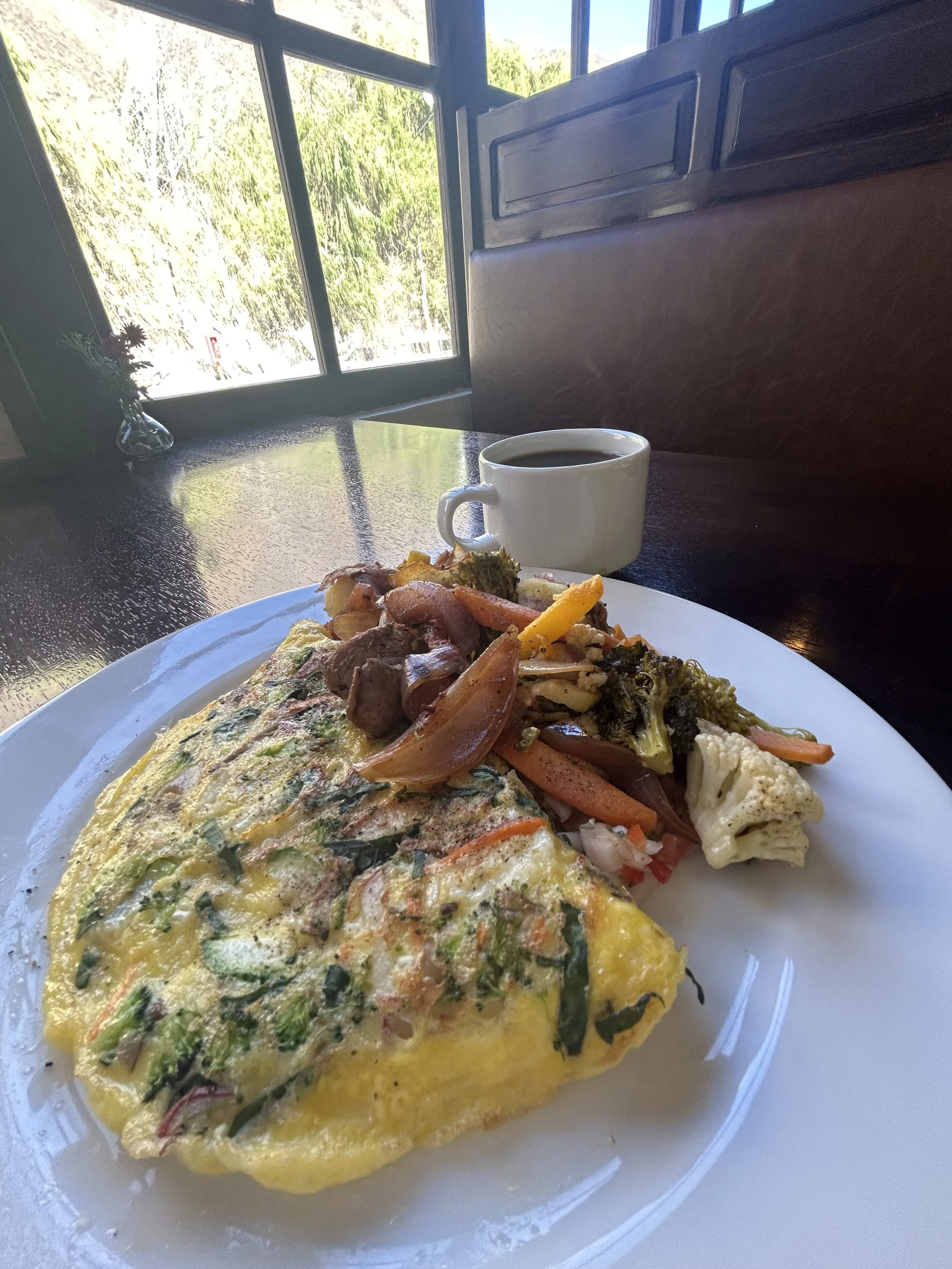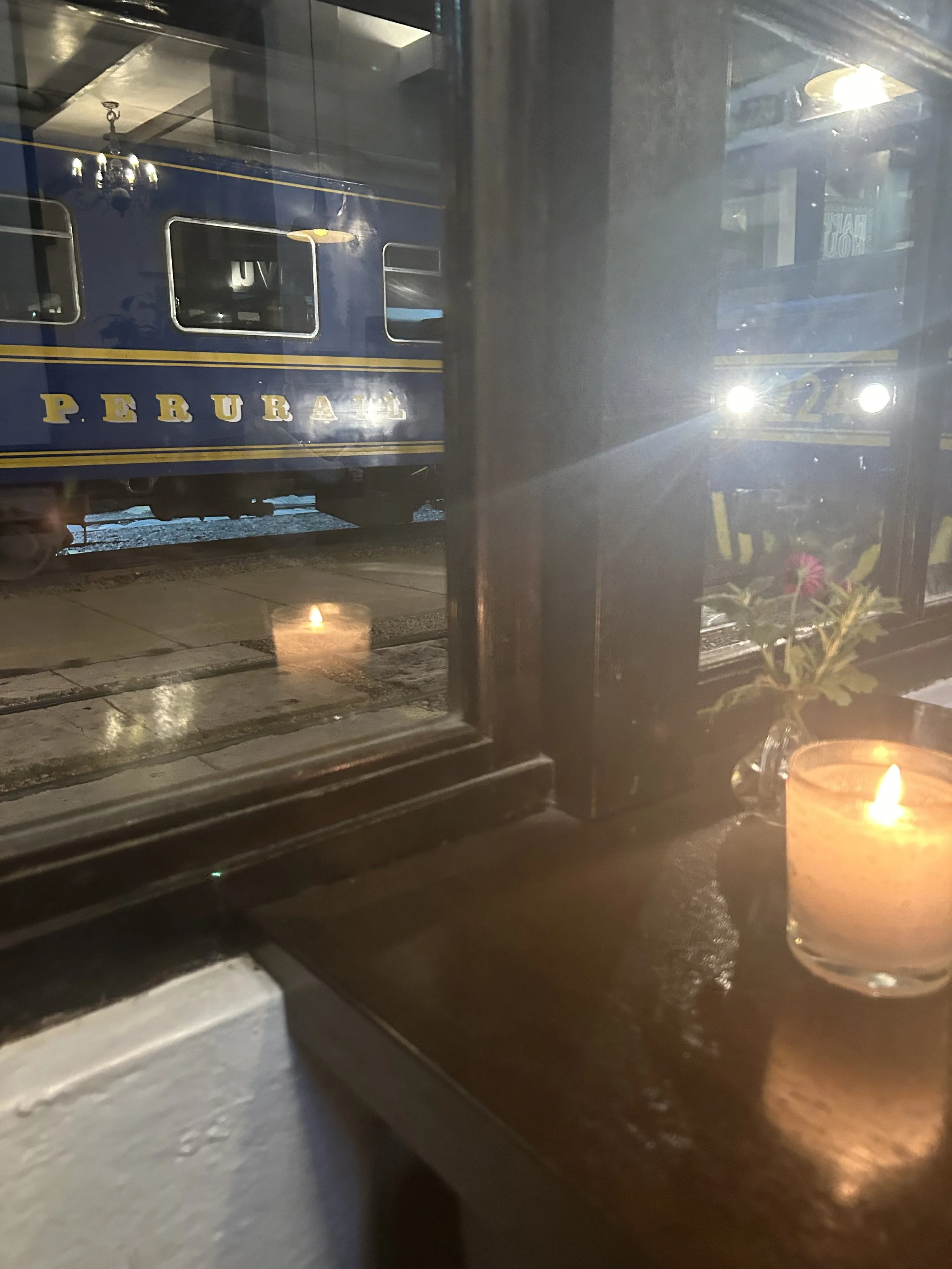Discovering Ollantaytambo, Peru
Rather than rush through the Sacred Valley, I stayed in Ollantaytambo as my ‘base’ for Machu Picchu and to also experience another part of the Sacred Valley (I also stayed in Pisac which you can read about here). The town itself is a mix of restaurants, markets, local Peruvians, Incan ruins and preserved infrastructure; there are small waterway canals that run along the small streets still in place from Incan times (pictured above)! Many people bi-pass and go direct from Cusco to Machu Picchu; or may do a day trip on a tour bus. However, if you have the time, staying in Ollantaytambo is a unique and beautiful place to experience the Sacred Valley.
For background and context, this was part of a 3 week journey throughout Peru. Check the other here for time in Pisac, Puno/Lake Titicaca and other parts of Peru.
Peru… A bucket list trip for many - self included! Peru is an extremely culturally rich and colorful country. Tourism is a pillar of the Peruvian economy; there was no shortage of ‘goods’ for sale to visitors, particularly throughout the Sacred Valley, and in Puno and Lake Titicaca. The people overall were very friendly and kind. My limited Spanish served to support me in connecting with Peruvians - which is always one of my intentions with travel. However, hotels and tours are accommodating to English speakers.
My itinerary:
Lima: 2 days (didn’t see much outside of Miraflores and a bit of Barranco; and definitely could have spent 3-4 days taking it slow)
Arequipa: 2 days (definitely could have stayed longer due to both the chill vibe and things to do)
Puno / Lake Titicaca: 4 days (sufficient)
Cusco: 2 days (definitely could have stayed/gone back, but chose not to)
Pisac: 4 days (took a pause here and also worked a bit)
Sacred Valley / Ollantaytambo: 1 week (a mix of solo retreats, exploring & Machu Picchu).
Ollantaytambo is the perfect place to stay in the Sacred Valley if you’re going to Machu Picchu and want to take a pause while exploring the various Incan fortress ruins throughout the Sacred Valley. The village is at the base of the Ollantaytambo ruins and has cobblestone streets and adobe buildings that preserve the grid system the Incans established. The quaint town square was bustling with locals who gathered throughout the day, which was a refreshing glimpse into local culture, where the prioritization of gathering in person is alive and well.
DO
Walk the quaint and quiet stone side streets that still have water canals built by the Incans, which provide a glimpse into the past. Probably one of my favorite strolls throughout Peru.
Visit the markets if you haven’t had your fill. There are no shortage of goods for sale as you make your way through many tourist destinations. There were more unique offerings here, including gorgeous wind chimes (which I didn’t buy so didn’t take a picture of) and plenty of gem stones, rocks and gorgeous jewelry. I picked up the rings below as something different than the beaded bracelets frequently offered.
STAY
Las Qolqas EcoResort for quiet, rustic, yet luxe and quality accommodations
Las Qolqas is tucked away with total tranquila, minimal yet modern luxe. ‘Rustic tents’ are fitted with all the comforts (including heat). Bed, linens and pillows were quality and supported restful sleep. This is the type of place that’s perfect for doing nothing but resting and relaxing on your private porch, or at the spa situated next to a stream. It’s the perfect place to conclude your stay in the Sacred Valley and possibly Peru. Plant lovers will indulge in the abundance of flowers and plants throughout the property, with a different type framing each tent. While there were many guests, the energy and vibe were very serene. This was an excellent ending to the trip - a bit of calm and ease. One afternoon was spent enjoying a fabulous spa experience complete with sauna, shower and tub and massage (staff were lovely too!), much needed after Machu Picchu and the travel in general. The food was fresh, locally organically sourced, with herbs and some vegetables grown on the property. An extensive breakfast was also included. Many people also use this as their ‘base’ to explore the area and visit Machu Picchu.
ALSO STAY
El Albergue for comfortable convenience getting to/from Machu Picchu. Also an easy 20 minute walk to the center of Ollantaytambo and ruins.
El Albergue is literally on the train tracks to Machu Picchu at the Ollantaytambo stop. Overall I had a wonderful experience and would recommend. The rooms were comfortable and spacious with quality beds and linens. However, as the hotel dates back to 1925, the rooms are not soundproof and I could hear people at night and early morning. Some rooms can hear the train which isn’t ideal.
I had excellent meals at the onsite restaurant, which served delicious dinners and breakfast (included with the stay) - both source local ingredients from the farm. For breakfast, they offered a variety of egg options, made to your liking; I opted for a veggie omelet accompanied by extra veg and potatoes from the buffet (that was frequently restocked and kept clean). The dinner pictured was truncha - trout and locally sourced vegetables sautéed and lightly seasoned. The trout was tender and flavorful and the vegetables were the perfect complement. The other dis pictured was a sautéed chicken with rice and vegetables. I am not normally a rice fan; but coming off a stomach bug, the night before visiting Machu Picchu, I wanted something light, yet substantial and this dish exceeded my expectations. They offer the rice either alone or with a protein; it was savory, the chicken super tender and the vegetables were the perfect balance of crunch and being cooked. The final photo below is of my favorite dining spot, where you can watch the trains going in and out of the station and people going to and from Machu Picchu.
EXPERIENCES through El Albergue:
Pachamanca lunch: a several hour ‘experience’, that also toured the farm. It was fascinating to learn and see the simplicity of cooking our meal under hot stones (literally everything we had - meats, vegetables, a quinoa dish - were cooked under the hot rocks and leaves - which is a local tradition. Oftentimes for celebrations and family gatherings, this meal will be prepared. My only feedback was that it was WAY too much food for 1 person! I had enough easily for 2 or 3 people. I felt wasteful and it wasn’t like you could take it with you... otherwise, a very cool cultural experience.
Visit the Mayu Coffee Roastery to learn about their coffee roasting on site, and Sandro at Destilería Andina, which focuses on Matacuy, a local spirit, and other distillates.
Connected with the hotel yet accessible from the train waiting platform (and next to the waiting room) is Café Mayu which serves coffee roasted on site and goods to go.
Also under the El Albergue umbrella is Chuncho Restaurant and Bar situated across from the main plaza receives high ratings and reviews; unfortunately I didn’t have time to visit, but if the food is like that at the hotel, then would definitely recommend.
Why most people travel to Peru….Machu Picchu!
Part of the purpose in staying in Ollantaytambo was for ease in getting to/from Machu Picchu. I’ll share a few nuggets from my visit to Machu Picchu that may be helpful; there’s plenty of resources out there so I won’t go overboard. There are many ways to experience and see Machu Picchu. Many do the treks throughout the Sacred Valley that ultimately arrive at Machu Picchu. While intrepid, I preferred a direct and simple experience; also traveling solo and knowing my limits, (particularly as I was recovering from a stomach bug too) what I experienced was just fine. My experiences as such are just for ideas and also some nuggets that
Machu Picchu & Related Tips:
To get to Machu Picchu, Take the PeruRail to and from Aguas Calientes, the gateway to Machu Picchu. There are a few different types of train cars; I took both the Expedition, which has views from both the sides and top of train I also took the PeruRail Vistadome Observatory, however, for the additional cost it wasn’t worth it (the ‘entertainment’ car experience was chaotic and not well organized; as well as if there was a different view, the sun was already set so it was dark out. There was a snack box given but apart from tea and water, it was nothing special).). Maybe during the day it would be worth it for the views at least.
Depending on the time of year you plan to visit, purchasing tickets in advance is usually recommended as you’ll also select an entrance time. I went at 12pm and the weather was perfect (1st of July). Machu Picchu is typically closed for the month of February for maintenance.
I recommend getting a guide, particularly if you are traveling solo. They are readily available for hire when you get to Aguas Calientes or through your hotels. When I arrived in Aguas Calientes and went to buy my bus ticket, I was approached by several people offering to guide me. There is some room for negotiation. There’s a lot of group tours as well. Joining a group cost a lot less (approx $20 USD vs $80 USD for a private). However, I didn’t want to go with a group, as I wanted to go at my own pace. Also, there were sections of steep stones that I was grateful for 1:1 support. There’s a lot of information out there on Machu Picchu so I won’t go overboard. Suggest wearing hiking boots or supportive sneakers and layers as the weather changes throughout the day, and bring water, snacks and sunscreen.
Misc:
~ Water throughout Peru is not safe for drinking consumption. It is ok for brushing your teeth and showering though.
~ The markets are abundant with goods, typically sweaters, ponchos, bags and home goods. You’ll see a lot of the same items over and over. Prices will vary too. I was surprised, that prices for a lot of things were better in Cusco, Pisac and Ollantaytambo. Everything is negotiable;)
~ Language: Spanish, Quechua (native) and English is spoken in tourist spots
~ The altitude can be a doozy. Ollantaytambo is at 9,160 ft (2,792 m). Drinking lots of water is a must, electrolytes are worth packing and also if you’re in to the natural alternatives, there’s herbal tablets available in the local pharmacies and coca candies and leaves are readily available that can help
How I stayed connected to myself/ how I stayed grounded/ how I stayed healthy
Drink water. Journal, take a few minutes before I get out of bed to connect with myself, give gratitude and thanks to god and also what I do before bed as well. With having more space on this trip, I squeezed in yoga and stretching every day as I had my travel yoga mat.
Intention for the trip: To be open and present to the energy, and learn more about the Incans, particularly their usage of plants for supporting health & well-being.
WHAT SPARKED JOY ON THIS JOURNEY?
~ Wandering the quiet and quaint streets with the side small canals, with water flowing, set below the Incan ruins. The character of the cobblestone streets and stone buildings and their durability were remarkable.
~ Both of my stays were well picked and were unique and also perfect for what I was seeking with each stay - El Albergue was perfect for convenience and comfort and had a buzzy vibe, which was cool to experience and be in the energy. While Las Qolqas was the perfect tranquil reprieve to conclude the trip, which allowed me to have some down time and do nothing other than read, write and enjoy nature, and the spa.


